HVAC engineers face a frustrating dilemma – mechanical water meters wear out quickly while ultrasonic models struggle with air bubbles. The solution might surprise you.
Electromagnetic flow meters (EMFs) outperform mechanical and ultrasonic models in chilled water systems, delivering ±0.25% accuracy with no moving parts to wear out. Unlike ultrasonic meters, EMFs aren’t affected by air bubbles or pipe scale that plague HVAC systems, plus they maintain accuracy for 15+ years with zero pressure drop – cutting maintenance costs by 60%.
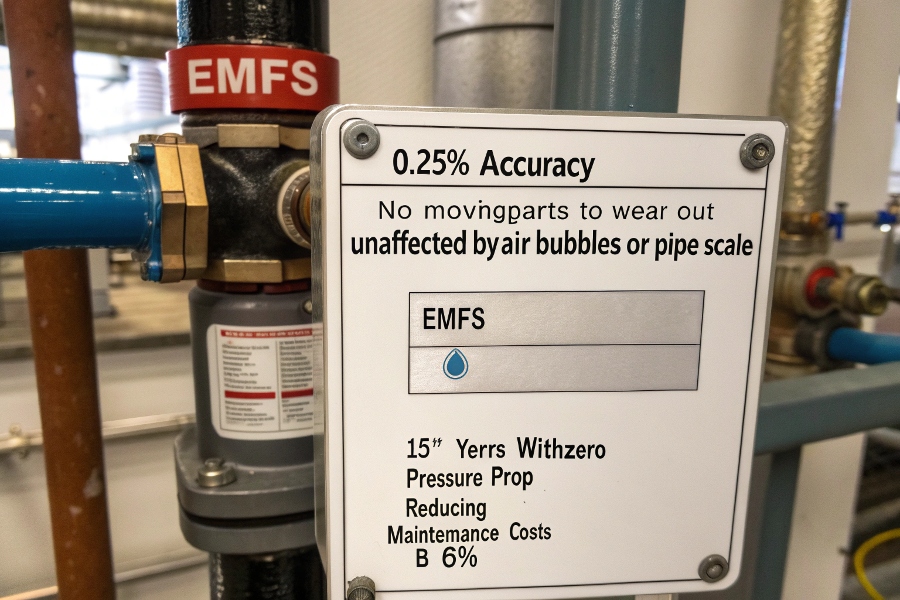
Chilled Water Loop Diagram
Here’s how EMFs solve common HVAC measurement headaches.
What Is the Difference Between Electromagnetic and Ultrasonic Flow Meters?
Both technologies measure flow without moving parts, but their operating principles differ fundamentally.
EMFs measure flow by detecting voltage changes in conductive fluids using Faraday’s Law, requiring at least 5 μS/cm conductivity. Ultrasonic meters calculate flow by tracking transit time differences of sound waves, making them unsuitable for dirty water containing air bubbles or solids common in HVAC systems.
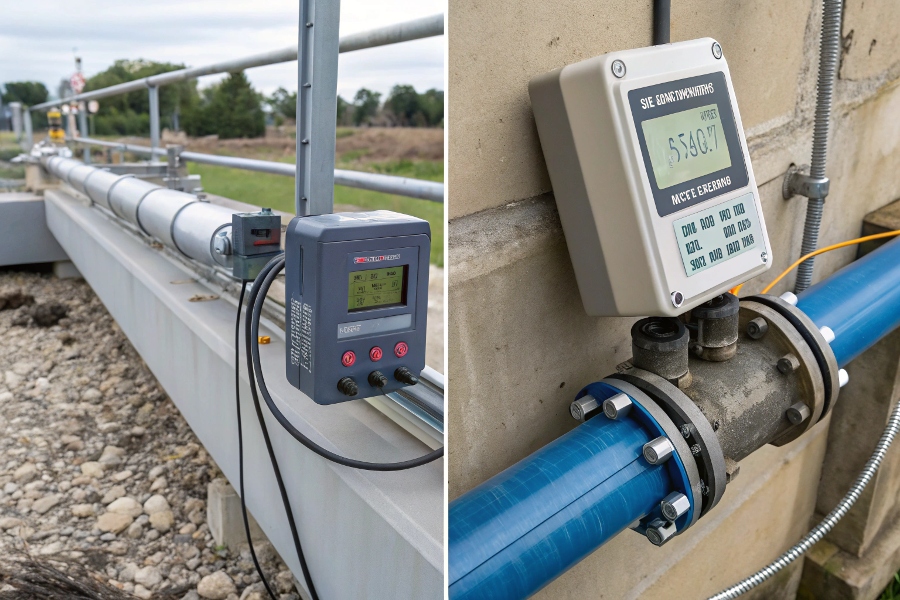
EMF vs Ultrasonic
Key differences in HVAC applications:
EMF vs Ultrasonic Performance in Chilled Water
| Feature | Electromagnetic | Ultrasonic |
|---|---|---|
| Accuracy | ±0.25% of rate | ±1% of rate |
| Air Bubbles | No effect | Causes errors |
| Pipe Scaling | No effect | Reduces signal |
| Fluid Conductivity | Requires 5μS/cm | No requirement |
| Installation | Needs cutting pipe | Clamp-on available |
| Lifespan | 15-20 years | 8-12 years |
| Cost | Higher initial | Lower initial |
What Is the Most Accurate Type of Water Meter?
Accuracy claims vary wildly in flow measurement.
For chilled water, full-bore electromagnetic meters provide the highest proven accuracy (±0.25% actual flow rate) when properly installed. Mechanical meters degrade to ±2% within 3 years due to bearing wear, while even premium ultrasonic models achieve only ±1% in ideal conditions – making EMFs the long-term accuracy champions.
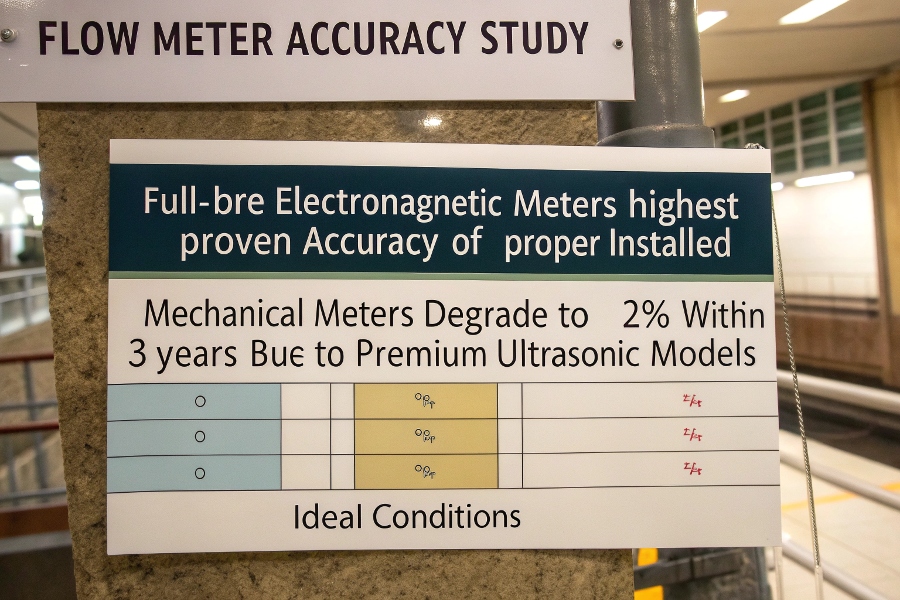
Flow Meter Accuracy Study
Factors affecting real-world accuracy:
-
Pipe Conditions
- EMFs: Unaffected by internal scale or buildup
- Ultrasonic: Signal loss with lime deposits
- Mechanical: Jams from debris
-
Flow Profile
- EMFs: Require only 5D straight pipe upstream
- Ultrasonic: Need 10D+ for stable flow
- Mechanical: Need clean flow to prevent turbine damage
-
Fluid Changes
- EMFs: Work from 0.5-12 m/s without recalibration
- Ultrasonic: Need adjustment for temperature shifts
- Mechanical: Wear increases at high velocities
How Accurate Is the Ultrasonic Clamp-On Flow Meter?
Clamp-on convenience comes with accuracy tradeoffs.
Field studies show clamp-on ultrasonic meters average ±2-5% error in HVAC applications due to pipe coupling issues and signal attenuation. Even new models struggle to maintain ±1% accuracy after 3 years as pipe surfaces oxidize, while EMFs maintain ±0.5% for decades when properly grounded and lined with PTFE for chilled water protection.
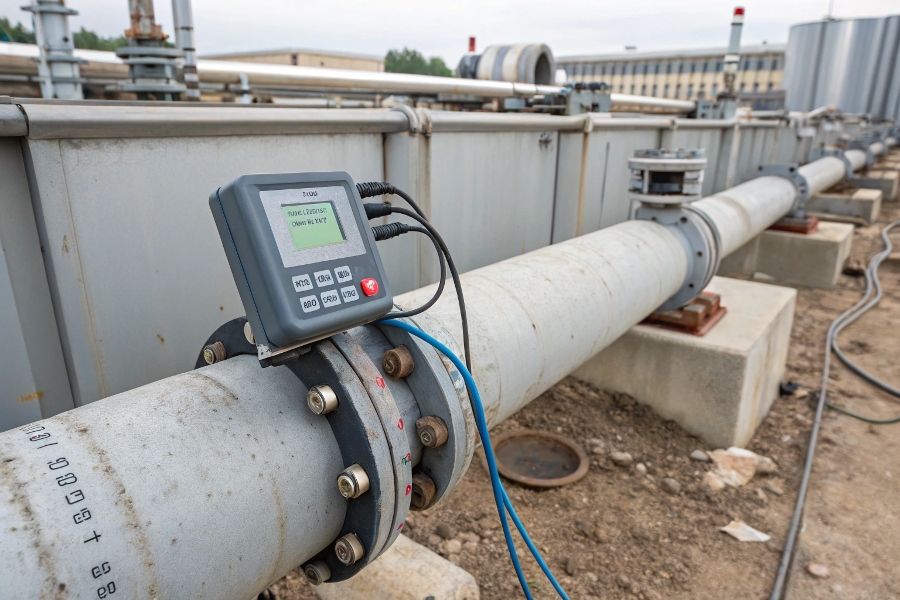
Clamp-On Limitations
Why ultrasonic falls short in HVAC:
Ultrasonic Meter Challenges
-
Coupling Gel Deterioration
Dries out annually, requiring reapplication -
Pipe Wall Thickness Variations
Common in retrofit projects causes measurement drift -
Temperature Cycling
Expansion/contraction changes transducer alignment -
Air Entrainment
Common in chilled water creates signal voids
How Accurate Is the Water Meter Reading?
Regulatory standards define acceptable error margins.
ISO 4064 allows ±2% error for mechanical water meters, while electromagnetic meters meet ±0.5% under MID/DIN standards. In HVAC applications, EMFs deliver actual accuracies 4x better than mechanical meters after 5 years of service, with no degradation from glycol additives common in chilled water systems.
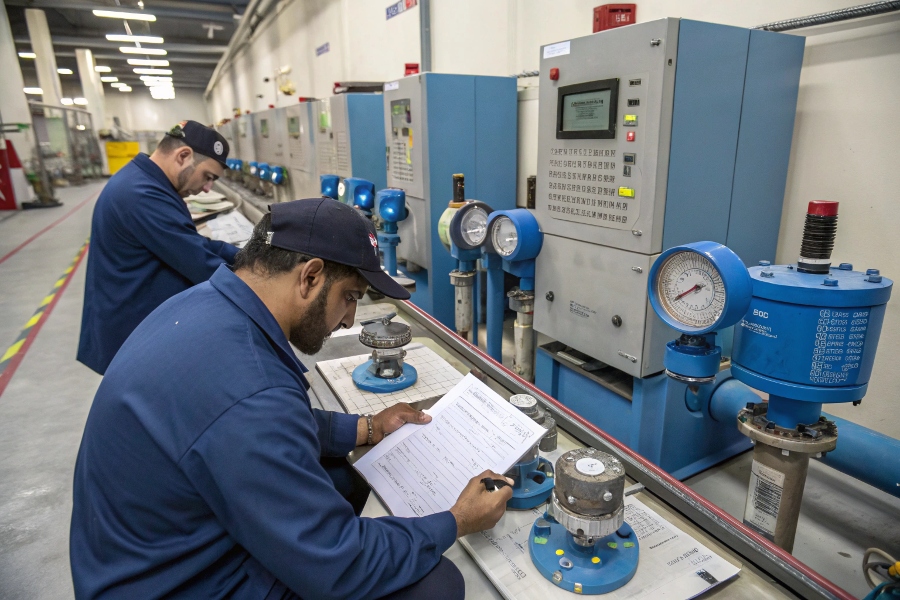
Calibration Process
Achieving reliable measurements:
Best Practices for Chilled Water Metering
-
Proper Grounding
Use dedicated grounding rings (not pipe clamps) -
Liner Selection
PTFE for glycol mixtures, ceramic for abrasive fluids -
Flow Conditioning
Install star-shaped flow conditioners in tight spaces -
Verification
Portable ultrasonic checks quarterly (as secondary reference)
EMF Installation Tips for HVAC
Get maximum accuracy from day one.
-
Orientation Matters
Install with electrodes at 10 or 2 o’clock position to trap air pockets -
Insulate Properly
Prevent condensation on electronics in chilled environments -
Grounding
Use manufacturer-supplied grounding electrodes, not pipe connections -
Commissioning
Always perform zero calibration with pumps off
Conclusion
For HVAC chilled water systems, EMFs provide unmatched long-term accuracy and reliability. While initial costs exceed mechanical meters, their 15+ year lifespan with no maintenance or recalibration makes them the most cost-effective choice. The immunity to air bubbles and pipe scale ensures consistent performance where ultrasonic and mechanical technologies fail.
